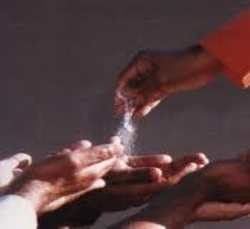In Addition
Vol 12 अंक 6
November/December 2021
1. Health Tips
Let your skin glow in health!
“The body has to be carefully and tenderly fostered; it is a precious gift, a very complicated but well-co-ordinated machine, given for achieving a laudable task. Its exterior too must be clean and full of the charm of goodness. The skin of the fruit of Ananda (divine bliss) is the physical body”…Sathya Sai Baba1
1. Structure and function of the skin
Skin with its appendages — nails, hair follicles, sweat glands, and sebaceous glands— is the largest organ in the body, comprising 15% of the total adult body weight. The three main layers of human skin are:
a. Epidermis is the outer thin, elastic, tough, and protective layer, it has no blood vessels. It is continuously regenerated by new cells made in its lowest layer which travel to the surface and replace the dead cells which  are shed each day. It prevents irritants and allergens from entering the body, maintains the internal water balance, determines the skin colour and protects from UV radiation through its pigment melanin. The top layer of epidermis gives rise to nails which protect the delicate tips of fingers and toes from injury, enable precise movements and touch sensitivity, and serve as a tool for cutting, scraping, or pinching very fine objects.
are shed each day. It prevents irritants and allergens from entering the body, maintains the internal water balance, determines the skin colour and protects from UV radiation through its pigment melanin. The top layer of epidermis gives rise to nails which protect the delicate tips of fingers and toes from injury, enable precise movements and touch sensitivity, and serve as a tool for cutting, scraping, or pinching very fine objects.
b. Dermis is the inner thick, fibrous, and elastic layer containing nerve endings, oil/sebaceous glands (to keep the skin and hair moist and soft), sweat glands, hair follicles, and blood vessels. This layer gives the skin its flexibility and strength, nourishes and protects the epidermis, and helps in wound healing.
c. Hypodermis/subcutis: the innermost fatty layer that helps attach the skin to the bone and muscles. It is interlaced with blood vessels and nerves, gives structural support to the skin, insulates the body from cold, aids shock absorption, and serves as an energy storage area.
The main functions of the skin are protection from infection and injury, thermoregulation, and sensation. Skin also pre-synthesises vitamin D from the sunlight facilitating the absorption of calcium and phosphorous, vitamin A, and steroid hormones.2-5
2. Causes and symptoms of skin disorders
2.1 Causes could be infection due to virus, bacteria, fungus, or parasite; allergy from exposure to the sun, cold/hot temperature, dust, pollen or mould spores, animal dander, perfume, soap, wool, food, chemicals, drugs, or another person’s skin; diseases like diabetes; genetics including autoimmune disorders; stress; medications, or injury caused by bites, stings, burns, or wounds. If there is no known cause, the underlying condition needs to be addressed.6.7,8
2.2 Symptoms that indicate skin problems are rash, blisters, open sores, bumps, ulcers, abscess, boils; also, abnormal pigmentation or discoloured patches, dry skin, itching, scaly or rough skin, peeling skin, lesions, or dry sores. Many a time it is not easy to gauge the skin condition and tests like biopsy, culture, or skin patch test may be required. Some skin changes may not be due to a disease.6.7,8
3. Skin infections
3.1 Viral infections: Herpes simplex remains dormant in the body and comes with a tingling, burning, and itching sensation in the affected area (usually in or around the mouth or genitals); can flare up as fever with  swollen lymph nodes, cold sores, or blisters. Herpes zoster (shingles) occurs when the dormant chickenpox virus gets reactivated, especially in older adults and those with weak immunity. First symptoms are severe burning or tingling pain followed by a band of rash or blisters on one side of the body. Usually clears up within 3 to 5 weeks. Can infect someone as chickenpox but not as shingles. Measles (rubeola) is a highly contagious childhood disease that manifests as very painful red blotchy rashes. Warts are noncancerous rough bumps, mostly on hands, soles of the feet (verruca), face, fingers, around fingernails and toenails, and genitals. They develop when the human papillomavirus (HPV) enters a cut or break in the skin causing infection that spreads by casual skin contact or through shared objects such as towels. Once the skin is infected, warts can take weeks or months to appear.7,9-14
swollen lymph nodes, cold sores, or blisters. Herpes zoster (shingles) occurs when the dormant chickenpox virus gets reactivated, especially in older adults and those with weak immunity. First symptoms are severe burning or tingling pain followed by a band of rash or blisters on one side of the body. Usually clears up within 3 to 5 weeks. Can infect someone as chickenpox but not as shingles. Measles (rubeola) is a highly contagious childhood disease that manifests as very painful red blotchy rashes. Warts are noncancerous rough bumps, mostly on hands, soles of the feet (verruca), face, fingers, around fingernails and toenails, and genitals. They develop when the human papillomavirus (HPV) enters a cut or break in the skin causing infection that spreads by casual skin contact or through shared objects such as towels. Once the skin is infected, warts can take weeks or months to appear.7,9-14
3.2 Bacterial infections are very common and hard to diagnose. Cellulitis is non-contagious and occurs in the lower layers of skin, especially when the skin is broken due to ulcer, bruise, burn, or a recent surgical  wound. It appears as tender red swelling, warm or hot to touch, mostly on the face of children and lower legs in adults. If not treated early, it can lead to blood infection and damage the immune system. Elevate and cover the affected area to aid healing. Other infections are: Impetigo is highly contagious, starts around the nose and mouth; Carbuncles (cluster of several furuncles/boils, contagious, usually on the back, thighs, or back of the neck); and syphilis that usually spreads by sexual contact and can be passed by mothers to unborn children, can remain dormant for long and can be cured in early stages but is life-threatening if untreated. Leprosy is mildly infectious with symptoms of discoloured patches of skin, numbness, muscle weakness, and skin lesions which can lead to decreased sensation to touch, temperature, or pain. Can be cured if diagnosed early. If not treated, the nerve damage can result in crippling of hands and feet, paralysis, and blindness.7,15-19
wound. It appears as tender red swelling, warm or hot to touch, mostly on the face of children and lower legs in adults. If not treated early, it can lead to blood infection and damage the immune system. Elevate and cover the affected area to aid healing. Other infections are: Impetigo is highly contagious, starts around the nose and mouth; Carbuncles (cluster of several furuncles/boils, contagious, usually on the back, thighs, or back of the neck); and syphilis that usually spreads by sexual contact and can be passed by mothers to unborn children, can remain dormant for long and can be cured in early stages but is life-threatening if untreated. Leprosy is mildly infectious with symptoms of discoloured patches of skin, numbness, muscle weakness, and skin lesions which can lead to decreased sensation to touch, temperature, or pain. Can be cured if diagnosed early. If not treated, the nerve damage can result in crippling of hands and feet, paralysis, and blindness.7,15-19
3.3 Fungal infections (mycosis) occur in the skin folds or where moisture gets trapped, like armpits, between fingers and toes, mouth, groin, vagina and also feet and nails; and includes diaper rash. Symptoms are bright  red rash with localised itchiness, sometimes with blisters or pustules. Ringworm infection, highly contagious, includes athlete’s foot and jock itch (in the groin area, more in men), and Candida infection like thrush which often occurs in mouth or throat, and armpits. Infants and those having dry mouth, uncontrolled diabetes, HIV infection, cancer, or pregnancy are more at risk. One can catch a fungal infection from infected animals, contaminated soil or surfaces, or through person-to-person contact. Though treatable with antifungal creams, the symptoms can drive one crazy; keep the affected area as clean and dry as possible.7,20-22
red rash with localised itchiness, sometimes with blisters or pustules. Ringworm infection, highly contagious, includes athlete’s foot and jock itch (in the groin area, more in men), and Candida infection like thrush which often occurs in mouth or throat, and armpits. Infants and those having dry mouth, uncontrolled diabetes, HIV infection, cancer, or pregnancy are more at risk. One can catch a fungal infection from infected animals, contaminated soil or surfaces, or through person-to-person contact. Though treatable with antifungal creams, the symptoms can drive one crazy; keep the affected area as clean and dry as possible.7,20-22
3.4 Parasitic infections: Head lice are tiny insects that live on people’s heads and feed on their blood. Marked by itching around the ears and the neck, especially at night, it takes 4-6 weeks for the itching to start and  takes even longer to eliminate the lice and their nits. Body lice produces an intense itch. Scabies causes pimple-like itchy rash anywhere especially, the webspace between the fingers and toes, inner part of wrists, folds of elbows, armpits, waistline and groin area, and scalp of infants. All these are often found in people living in crowded conditions and spread person to person in proximity, common in children in daycare and schools. Creeping eruption/Sandworm disease has winding snake-like red itchy rash caused by hookworms, from eggs in the faeces of dogs and cats, found in moist sandy land; so don’t walk barefoot on contaminated ground, especially in tropical places.7,23
takes even longer to eliminate the lice and their nits. Body lice produces an intense itch. Scabies causes pimple-like itchy rash anywhere especially, the webspace between the fingers and toes, inner part of wrists, folds of elbows, armpits, waistline and groin area, and scalp of infants. All these are often found in people living in crowded conditions and spread person to person in proximity, common in children in daycare and schools. Creeping eruption/Sandworm disease has winding snake-like red itchy rash caused by hookworms, from eggs in the faeces of dogs and cats, found in moist sandy land; so don’t walk barefoot on contaminated ground, especially in tropical places.7,23
4. Allergies and autoimmune skin disorders
4.1 Skin allergy is triggered by contact with an allergen. When the immune system fights the trigger to remove it from the body, it results in red and itchy skin rash. Dermatitis includes eczema (due to genetic or 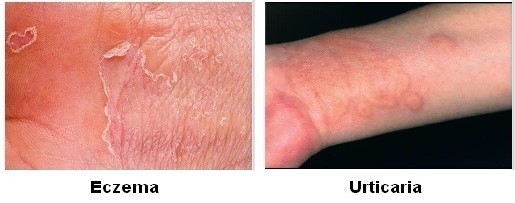 environmental factors; but can become a weeping/wet eczema due to excessive scratching), hives or urticaria (raised pink or red bumps, often in batches), and liver/sun spots (patches of darker skin due to exposure to ultraviolet light/radiation).8,24-26
environmental factors; but can become a weeping/wet eczema due to excessive scratching), hives or urticaria (raised pink or red bumps, often in batches), and liver/sun spots (patches of darker skin due to exposure to ultraviolet light/radiation).8,24-26
4.2 Autoimmune skin disorders considered incurable but not infectious or contagious: Psoriasis is caused when the skin regenerates its cells at an abnormally fast rate and the body is unable to shed the excess cells quickly. This manifests as thick itchy scales and red patches with burning or stinging sensations which flare up and subside periodically in cycles. It can be  triggered by weather conditions, stress, infections, allergens, smoking or alcohol, or medications. Lupus can manifest typically as red rash over the cheeks and bridge of the nose which may worsen by sunlight. Common in women, it can cause joint pain and inflammation throughout the body, fever, and even organ damage. Vitiligo/Leucoderma is a long-term condition where white patches develop on the skin, mostly on the face, neck, and hands, caused by a lack of pigment melanin. It makes one vulnerable to sunburn. On the other hand freckles (small brown spots), mostly harmless, are due to the overproduction of melanin caused by exposure to sunlight. Lichen planus, normally triggered by stress, it takes about 1 to 2 years to go away on its own, and patches take many months to fade away. Alopecia is loss of hair because hair follicles are attacked by one’s own body.6,27-33
triggered by weather conditions, stress, infections, allergens, smoking or alcohol, or medications. Lupus can manifest typically as red rash over the cheeks and bridge of the nose which may worsen by sunlight. Common in women, it can cause joint pain and inflammation throughout the body, fever, and even organ damage. Vitiligo/Leucoderma is a long-term condition where white patches develop on the skin, mostly on the face, neck, and hands, caused by a lack of pigment melanin. It makes one vulnerable to sunburn. On the other hand freckles (small brown spots), mostly harmless, are due to the overproduction of melanin caused by exposure to sunlight. Lichen planus, normally triggered by stress, it takes about 1 to 2 years to go away on its own, and patches take many months to fade away. Alopecia is loss of hair because hair follicles are attacked by one’s own body.6,27-33
5. Other skin disorders
5.1 Acne can be in the form of white or blackheads, pimples, cysts, and nodules, caused by blocked hair follicles or oil glands of the skin, often triggered by hormonal changes. Women with polycystic ovary syndrome often have acne. It may also be due to genetics, anxiety or stress, hot and humid climate, use of oil-based cosmetics, and squeezing pimples, and can leave scars. Every red bump may not be acne. Rosacea is a chronic swelling of the face with redness across the cheeks and nose, most common in women over 30 with lighter skin. The cause is unknown and attributed to an overactive immune system or heredity; it is neither contagious nor connected with hygiene.34-36
5.2 Skin cancer: its main warning signs are changes in the skin such as pink growths with raised edges and a depression in the centre, scar-like area with poorly defined border, painless firm shiny lumps, also open sores that don’t heal, and unusual moles.37,38
5.3 Other skin disorders: Corns and callouses are hardened or thick patches of skin due to repeated rubbing, irritation, or excessive pressure eg, when shoes don’t fit properly or one walks in the wrong posture.  Hyperhidrosis is abnormally excessive sweating not related to heat or exercise, genetic in nature or due to medical conditions like diabetes or Parkinson’s disease. Wrinkles are due to age, exposure to sun, dehydration, or genetics. Scars form as part of the body’s healing process after an accident, surgery, burns, acne, or an illness like chickenpox, some fade over time. Keloid is a thick raised scar after an injury to the skin. Dandruff is dry, flaky, itchy skin on the scalp, mostly due to irritated dry or oily skin.39-43
Hyperhidrosis is abnormally excessive sweating not related to heat or exercise, genetic in nature or due to medical conditions like diabetes or Parkinson’s disease. Wrinkles are due to age, exposure to sun, dehydration, or genetics. Scars form as part of the body’s healing process after an accident, surgery, burns, acne, or an illness like chickenpox, some fade over time. Keloid is a thick raised scar after an injury to the skin. Dandruff is dry, flaky, itchy skin on the scalp, mostly due to irritated dry or oily skin.39-43
6. First aid & home remedies for bites, stings, burns, and wounds44-50
6.1 To treat a bite or sting first remove the stinger if it is lodged in the skin, wash the affected area, and apply an ice pack to reduce pain and swelling; may apply a thin paste of baking soda and water to the sting to calm the itching.45
6.2 There are many home remedies for a mosquito bite like cold pack, oatmeal paste, aloe vera gel, lemon balm, basil or thyme leaf paste, apple cider vinegar, a slice of onion or garlic paste.46
6.3 Treating 1st-degree minor burns at home: Immediately immerse the burn in cool tap water or apply a cold, wet compress for about 10 minutes or until the pain subsides. Applying a layer of pure aloe vera gel taken directly from the leaf can heal first-to second-degree burns. Can apply petroleum jelly 2-3 times daily. Do not put butter, oil, egg white, toothpaste, ointment, or ice for they can irritate the burn areas and cause infection. Cover the burn with a non-stick, sterile bandage; once healed protect from the sun to minimise scarring. Seek immediate medical care for higher degree burns and any electrical burns however minor.47-49
6.4 First aid to a wound will speed up the healing process. Gently rinse the wound with clean lukewarm water. Towel dry and cover with dressing and light bandage, and seek medical care.50
7. Tips for a healthy skin
- Follow good hygiene practices. Clean skin folds, spaces between fingers, toes, and private parts. Washing hands regularly with soap can prevent infection.
- Be gentle with your skin; rubbing or scratching the skin will aggravate the problem and pave the way for infection.
- Avoid sharing personal clothing, comb, towel, bed linen, or footwear.
- Take care of your gut with a healthy diet, keep fit physically and mentally, drink plenty of water, and get enough sleep.
- Protect the skin from sun exposure when its rays are strongest. If need be, use sunscreen, moisturiser, and natural cleansers like milk, honey, oil, homemade paste of fruits or aloe vera.51,52
References and Links
- Sathya Sai Baba, Vehicle care, Divine Discourse, 16 October 1974, https://www.sssbpt.info/ssspeaks/volume12/sss12-48.pdf
- Structure of skin: https://www.nursingtimes.net/clinical-archive/dermatology/skin-1-the-structure-and-functions-of-the-skin-25-11-2019/
- https://www.hse.gov.uk/skin/professional/causes/structure.htm
- https://www.msdmanuals.com/en-in/home/skin-disorders/biology-of-the-skin/structure-and-function-of-the-skin
- https://www.medicalnewstoday.com/articles/320435#layers
- Causes and symptoms of skin diseases: https://my.clevelandclinic.org/health/diseases/21573-skin-diseases?view=print
- Skin infections: https://medlineplus.gov/skininfections.html
- Skin allergies: https://www.verywellhealth.com/skin-allergies-4013947
- Viral Herpes simplex: https://www.medicalnewstoday.com/articles/326173#is-it-herpes-or-something-else
- Shingles: https://my.clevelandclinic.org/health/diseases/11036-shingles
- Herpes versus shingles: https://www.healthline.com/health/shingles-vs-herpes
- Highly contagious measles: https://www.thehealthsite.com/photo-gallery/diseases-conditions-highly-contagious-skin-diseases-that-you-should-be-aware-of-pn0616-406271/measles-6-406390/
- Warts: https://my.clevelandclinic.org/health/diseases/15045-warts
- Nature of warts: https://www.nhsinform.scot/illnesses-and-conditions/skin-hair-and-nails/warts-and-verrucas
- Bacterial Cellulitis:https://www.verywellhealth.com/bacterial-skin-infections-1069439
- https://www.medicalnewstoday.com/articles/324654#cellulitis
- Syphilis: https://www.mayoclinic.org/diseases-conditions/syphilis/symptoms-causes/syc-20351756
- Leprosy: https://www.healthline.com/health/leprosy
- https://www.cdc.gov/leprosy/index.html
- Fungal: https://my.clevelandclinic.org/health/diseases/4276-skin-fungus
- https://www.medicalnewstoday.com/articles/317970
- Candida/Thrush: https://my.clevelandclinic.org/health/diseases/10956-thrush
- Parasitic infections: https://www.hopkinsmedicine.org/health/conditions-and-diseases/creeping-eruption
- Various skin allergies:https://www.makatimed.net.ph/news-and-exhibits/news/4-skin-allergies-caused-by-the-weather
- Eczema: https://www.verywellhealth.com/weeping-eczema-overview-and-more-5193765
- Liver spots: https://my.clevelandclinic.org/health/diseases/21723-liver-spots
- Autoimmune skin disorders: Psoriasis: https://www.medicalnewstoday.com/articles/52457
- https://www.mayoclinic.org/diseases-conditions/psoriasis/symptoms-causes/syc-20355840
- Lupus: https://my.clevelandclinic.org/health/diseases/4875-lupus
- Vitiligo: https://www.nhs.uk/conditions/vitiligo/
- Freckles: https://www.healthline.com/health/what-are-freckles#sunburn
- Lichen planus: https://www.healthline.com/health/lichen-planus#pictures
- Alopecia: https://www.aad.org/public/diseases/hair-loss/types/alopecia/causes
- Acne and other common diseases with pics: https://www.drugs.com/slideshow/most-common-skin-conditions-1086
- PCOS-acne: https://www.medicalnewstoday.com/articles/pcos-acne
- Rosacea: https://www.mayoclinic.org/diseases-conditions/rosacea/symptoms-causes/syc-20353815#
- Skin cancer: https://www.cancer.net/cancer-types/skin-cancer-non-melanoma/symptoms-and-signs
- https://www.cancercenter.com/cancer-types/skin-cancer/symptoms
- Corns & Callouses: https://my.clevelandclinic.org/health/diseases/16896-corns-and-calluses
- Sweating: https://www.mayoclinic.org/diseases-conditions/hyperhidrosis/symptoms-causes/syc-20367152
- Wrinkles: https://www.mayoclinic.org/diseases-conditions/wrinkles/symptoms-causes/syc-20354927
- Scars/keloids: https://www.mayoclinic.org/diseases-conditions/keloid-scar/symptoms-causes/syc-20520901
- Dandruff: https://www.mayoclinic.org/diseases-conditions/dandruff/symptoms-causes/syc-20353850
- Different bites/stings Pics: https://www.healthline.com/health/bug-bites#pictures-of-different-bites-and-stings
- First aid for bite/sting: https://www.nhs.uk/conditions/insect-bites-and-stings/treatment/
- Home remedies for mosquito bite: https://www.healthline.com/health/outdoor-health/home-remedies-for-mosquito-bites
- Minor burns: https://www.aad.org/public/everyday-care/injured-skin/burns/treat-minor-burns
- Dealing with burns: https://www.healthline.com/health/home-remedies-for-burns#dont-use
- https://www.medicalnewstoday.com/articles/319768#how-severe-is-the-burn
- Wound first aid: https://www.healthywa.wa.gov.au/Articles/U_Z/Wounds-first-aid
- Tips for Skin Care: https://www.goodhousekeeping.com/beauty/anti-aging/a34301/best-skin-care-tips/
- Home remedies for skin care: https://food.ndtv.com/beauty/skin-nourisher-vs-moisturiser-10-natural-ingredients-for-youthful-skin-1264905
2. Sai Vibrionics Research, Training & Wellness Centre - construction starts
Bhoomi pooja is a sacred ritual performed in honour of Goddess Bhoomi (earth) and Vastu Purush (deity of directions). The purpose is to eradicate the ill effects and Vastu doshas in the land and pave the way for a smooth construction. Vastu is the ancient Hindu system of architecture and design that aims to integrate architecture with nature, the relative functions of various parts of the structure, and ancient beliefs utilising geometric patterns (yantra), symmetry, and directional alignments. It is closely followed by Sankusthapna, laying of the foundation stone. Some pics from the two ceremonies
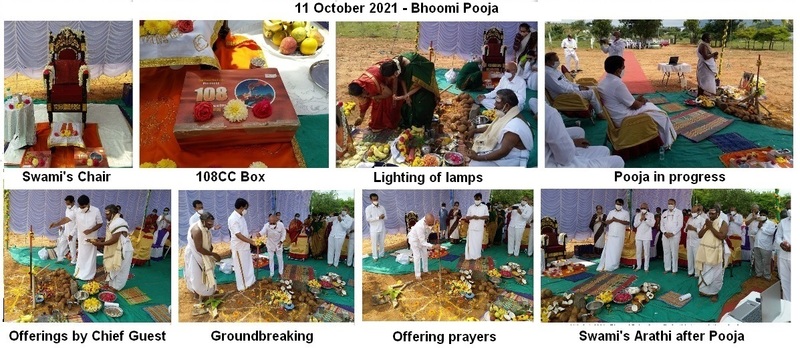
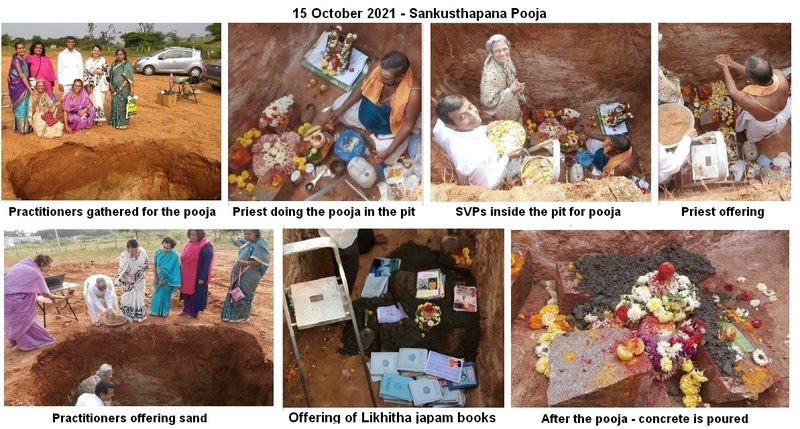
3. Resumption of Vibrionics group activities in India
Some pics from the various activities….
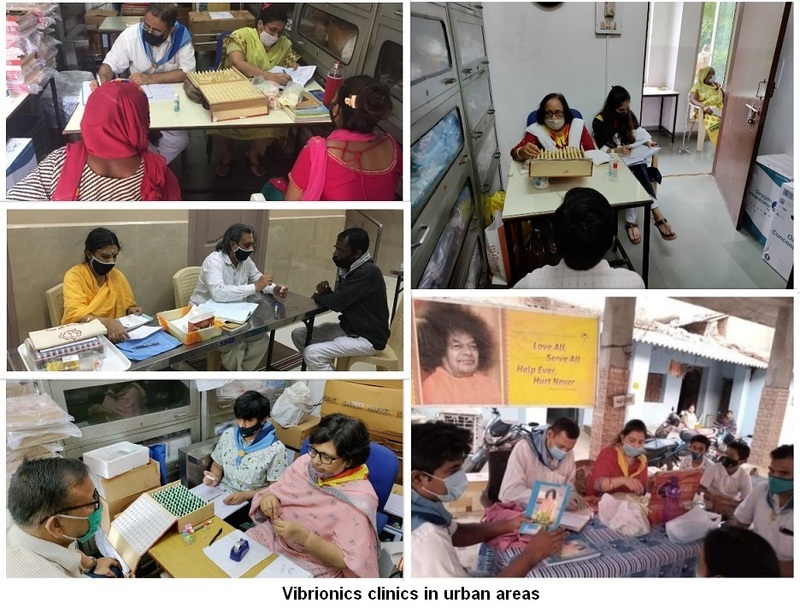
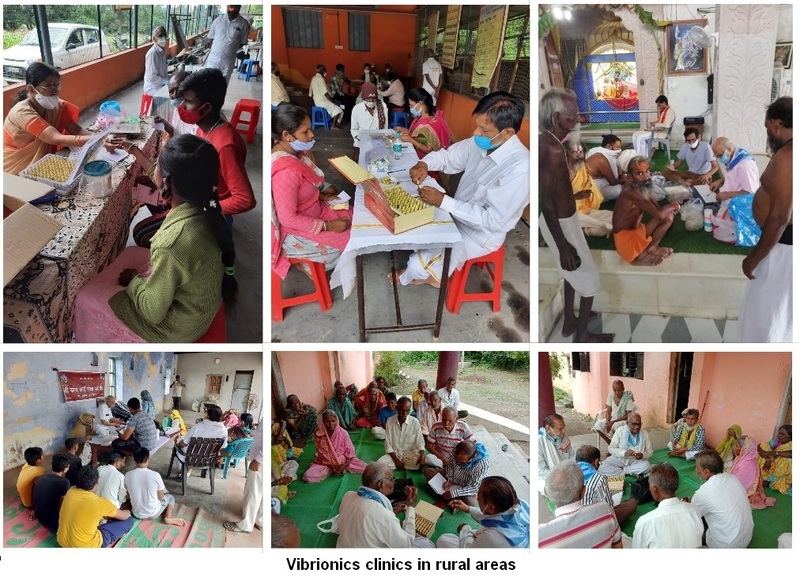
\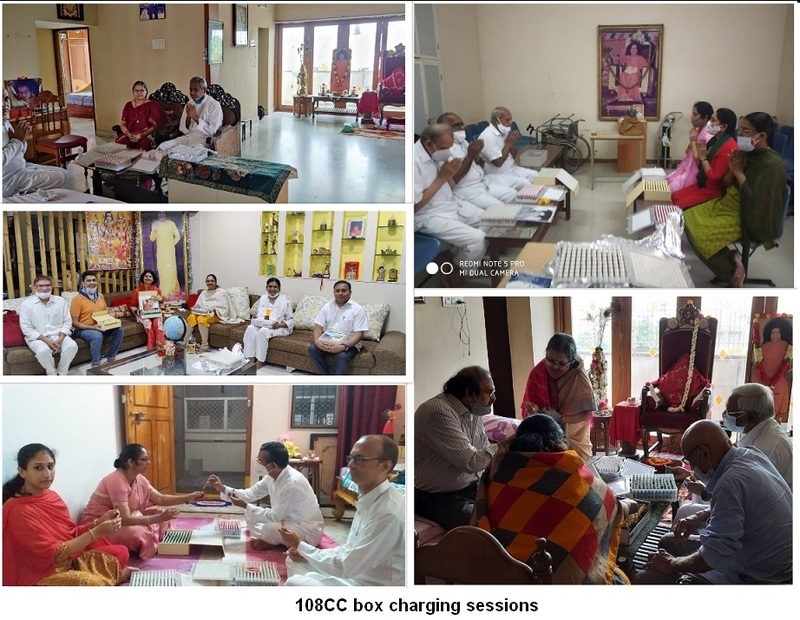
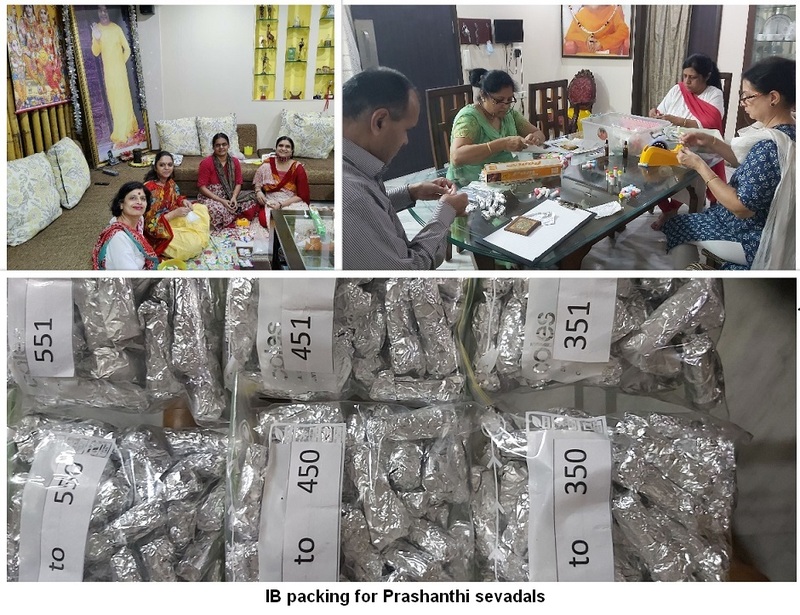
4. UK annual virtual meet, London, 19 September 2021
Organised by the UK coordinator 02822, who had worked hard in inspiring the speakers to send their presentations in advance. This gave the participants (26 in all) time to think deeply about the topics so as to prepare their queries. Practitioner 03531 has taken full responsibility for setting up and running all future virtual meetings. There will be three UK meets a year - a National meet and two more run by regional groups, but all are eligible to participate.
Dr Aggarwal gave an exciting brief on the upcoming project for the construction of the vibrionics centre and Head office in Puttaparthi. Practitioner 03555 shared two cases of successful skin treatment. Practitioner 00217 addressed the problem experienced by many practitioners, that of getting negatively affected by patients’ low energy. In his personal experience the affirmation “I must refrain from thinking I am the healer, I am not the doer, this body is an instrument of the Divine to do its work, I must refrain from claiming the result of any action” keeps him shielded from the patients’ negative energy. Practitioner 02900 related his personal experience of the efficacy of vibrionics in preventing a fracture after a very bad fall despite his osteoporosis, diagnosed in 2008. The skeletal remedies along with potentised Alendronic acid (common osteoporosis medicine) have done wonders for him.
There were two excellent Powerpoint presentations. Practitioner 02802, an experienced physician, gave very useful tips on prevention of Alzheimer’s disease, namely balanced & healthy diet, daily exercise - recommending 30 min of brisk walking, adequate 7-8 hours of sleep, learning new things and plenty of social interactions. Another doctor practitioner 02829 gave practical information on symptoms of Covid-19 amongst fully vaccinated individuals, the top five being - runny nose, headache, sneezing, sore throat, and loss of smell. In case of infection, she suggests taking treatment at the earliest, rather than thinking that it is just a cold or sore throat. She recommends IB…6TD along with a suitable combo targeting the affected organ; adequate rest, frequent hot drinks (keep hydrated) and steam inhalations, hot soup, and home oxygen if needed. Above all be positive. Within 10 days most patients get their strength back.
The meeting concluded with the usual vote of thanks and Aarti.
5. Interesting Anecdotes
Miracles of CC10.1 Emergencies
The practitioner 11632…India has achieved great success with the use of CC10.1 Emergencies. During the pandemic, she gave to all her patients a separate bottle labelled Om containing CC10.1 Emergencies to be used in any emergency.
Case #1. After qualifying as an AVP, the practitioner treated her whole family with vibrionics, much to the delight of her enthusiastic 6-year-old grandson who enjoys administering daily the IB to all family members. “I love Vibrionics and Swami”, he proudly declares. On 21 May 2021, he fell from his chair, the impact resulting in a gushing nosebleed with severe pain. His panicked family ruled out the local hospital as being too risky during the pandemic. “Granny, you are a vibrionics doctor! Why don’t you give me vibrionics medicine? I will be fine if I take it!” announced the bleeding child. She put one pill of Om under his tongue. Within ten minutes, the bleeding stopped and the pain vanished.
Case #2. On 28 May 2021, undergoing a stressful domestic ordeal, a 78-year-old handicapped female patient suffered from intense anxiety with heart palpitations, reeling sensation, and perspiration, her first such experience. She took one dose of Om which gave her immediate relief and no recurrence.
Case #3. In May 2021 a 63-year-old village patient tested Covid positive, developing breathing difficulty as his oxygen level dropped drastically. The emergency help did not turn up. In a state of panic, the wife rang her practitioner and was told to put one pill of Om under her husband’s tongue while chanting the divine name. To their great relief, the patient immediately started to feel comfortable and his condition remained stable until help arrived two hours later. His wife credits vibrionics for saving her husband from a critical situation that might have taken his life. She considers this to be no less than Swami's miracle.
Case #4. A 68-year-old female patient, soon after learning her granddaughter had tested Covid positive, developed diarrhoea. The next morning on 25 May 2021, on the practitioner’s advice, she took two doses of Om half an hour apart, this completely stopped her diarrhoea. A surprise bonus was that she now started enjoying sound sleep which she had not had for several years due to her husband’s depression!
Case #5. The practitioner's 50-year-old neighbour on IB for three months complained of enormous stress and disturbed sleep since her close relatives went into the hospital with Covid. She took one pill of Om, slept soundly and woke up in the morning, well-rested, relaxed and cheerful.
6. In Memoriam
It is with much sadness that I bring you the news of the passing away of Mr John Galvin 02444 on 13 September 2021 at the age of 72. He and his wife 01228 have been enthusiastically serving patients in and around Puttaparthi, in remote Himalayan villages as well as in Goa for the past 18 years. They regularly held vibrionics camps at local schools and have been instrumental in holding medical camps at the railway station on Swami’s Birthday since 2009, even during the pandemic. John will be remembered by the vibrionics fraternity for his exemplary service. Our hearts go out to his wife in her hour of bereavement.
